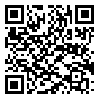1. Tremblay, L., Timothy N. Welsh., & Elliot, D. (2001). Specificity Versus Variability: Effects of Practice Conditions on the Use of Afferent Information for Manual Aiming. Motor Control.)5(: 347-360.
2. Proteau, L., Marteniuk, R.G., Girouard, Y., & Dugas, C. (1989). On the type of information used to control and learn an aiming movement after moderate and extensive training. Hum Movement Sci. 6 (2): 181–199.
3. Proteau, L.; Marteniuk, R. G. & Levesque, L. (1992). “A sensorimotor basis for motor learning: Evidence indicating specificity of practice”. Q J Exp Psychol. 44A (3): 557-575.
4. Smyth, M. M. (1989). Visual control of movement patterns and the grammar of action. Acta Psychologica, 70, 253-265.
5. Coull, Tremblay, Elliott. (2001). Examining the specificity of practice hypothesis: Is learning modality specific? Res Q Exercise Sport. 72(4): 345-354.
6. Soucy, M.-C., & Proteau, L. (2001). Development of multiple movement representations with practice: Specificity vs. flexibility. J Motor Behav. 33 (3): 243–254.
7. Elliot, D., & Jaeger, M. (1998). “Practice and the visual control of manual aiming movements”. J Hum Movement Stud. (14): 279-291.
8. Robin, C., Toussaint, L., Blandin, Y., & Vinter. (2004). A Sensory integration in the learning of aiming toward “self-defined” targets. Res Q Exercise Sport. 75(4): 381-387.
9. Proteau, L., Tremblay, L., & DeJaeger, D. (1998). Practice does not diminish the role of visual information in on-line control of a precision walking task: Support for the specificity of practice hypothesis. J Motor Behav. 30(2): 143–150.
10. Yoshida , Cauraugh, Chow. (2004). Specificity of Practice, Visual Information, and Intersegmental Dynamics in Rapid-aiming limp movements. J Motor Behav. 36(3): 281- 290.
11. Blandin, Y., Toussaint, L., & Shea, C.H. (2008). Specificity of practice: interaction between concurrent sensory information and terminal feedback. J Exp Psychol Learn Mem Cogn. 34(4): 994–1000.
12. Toussaint, L., Robin, N., & Blandin, Y. (2010). On the Content of Sensorimotor Representations After Actual and Motor Imagery Practice. Motor Control. 14(2): 159-175.
13. Christine Adams Reed. Manipulation of vision while learning a sensory driven motor task: establishing a boundary to the specificity of practice hypothesis. A thesis for the degree of MASTER OF SCIENCE, Iowa State University, 2007.
14. Marchant1 D, Clough P, Crawshaw2 M, Levy A. (2009). Novice Motor Skill Performance and Task Experience is Influenced by Attentional Focusing Instructions and Instruction Preferences. IJSEP, 7, 488-502.
15. Khan, A.,& Fanks,l. M. (2000).The effect of practice on component sub movements is dependent on availability of visual feedback. J Motor Behav. 32(3): 227-240.
16. Proteau, L. )2005.( “Visual afferent information dominates other sources of afferent information during mixed practice of a manual aiming task”. Exp Brain Res.161(4): 441-456.
17. Meyer, D.E., Abrams, R.A., Kornblum, S.,Wright, C.E., & Smith, J.E.K. (1998). Optimality in human motor performance: Ideal control of rapid aim movements. Psychol Rev. 95(3): 340-370.
18. Cordo, P.J., & Flanders, M. (1990). Time-dependent effects of kinesthetic input. J Motor Behav. 22(1): 45-65.
19. Flanders, M., & Cordo, P.J. (1998). Kinesthetic and visual control of a bimanual task: Specification of direction and amplitude. J Neurosci . 9 (2): 447-453.
20. Bédard, P., & Proteau, L. (2004). “On-line vs. off-line utilization of peripheral and central visual afferent information to ensure spatial accuracy of goal-directed movements”. Exp Brain Res. 158(1): 75–85.
21. Krigolson, van Gyn, Tremblay. (2006). Is there feedback during visual imagery? Evidence from a specificity of practice paradigm. Can J Exp Psychol. 60 (1): 24-32.
22. Proteau, L., & Isabelle, G. (2002). On the role of visual afferent information for the control of aiming movements toward targets of different sizes. J Motor Behav. 34 (4): 367–384.
23. Robertson, S.; Collins, J.; Elliott, D. & Starkes, J. (1994). “The influence of skill and intermittent vision on dynamic balance”. J Motor Behav. 26(4): 333-339.
24. Lidor, R., & Singer,R. N. (1994). Motor skill acquisition, auditory distracters, and the encoding specificity hypothesis. Percept Motor Skills. 79(3): 1579-1584.
25. Bennett, S.J.; & K. Divids. (1995). “The manipulation of vision during the power lift squat: Exploring of the boundaries the specificity of learning hypothesis”. Res Q Exercise Sport. 66(3): 210-218.
26. Ivens, C.J., & Marteniuk, R.G. (1997). Increased sensitivity to changes in visual feedback with practice. J Motor Behav. 29(4): 326–338.
27. Robin, C., Toussaint, L., Blandin, Y., & Proteau, L. (2005). Specificity of learning in a video-aiming task: Modifying the salience of dynamic visual cues. J Motor Behav. 37(5): 367–376.
28. Krigolson., Tremblay. (2009).The amount of practice really matters: Specificity of practice may be valid only after sufficient practice. Res Q Exercise Sport. 80(2): 197-204.
29. Short, Martin Wayne. Specificity and variability of practice in a rapid aiming task, ProQuest Dissertations & Theses for degree of DOCTOR OF PHILOSOPHY, ProQuest Dissertations & Theses: UNIVERSITY OF FLORIDA; MAY 2000.
30. Park, J.H., & Shea, C.H. (2003). The independence of sequence structure and element production in timing sequences. Res Q Exercise Sport. 74(4): 401-420.
31. Wulf, G., & Schmidt, R. A. (1989). The learning of generalized motor programs: Reducing the relative frequency of knowledge of results enhance memory. J Exp Psychol Learn Mem Cogn. 15(4): 748-757.
32. Christine Adams Reed. Manipulation of vision while learning a sensory driven motor task: establishing a boundary to the specificity of practice hypothesis. A thesis for the degree of MASTER OF SCIENCE, ProQuest Information and Learning Company: Iowa State University; 2007.
33. Digby Elliott, Romeo Chua, Barbara J. (1995). Pollock and James Lyons. Optimizing the Use of Vision in Manual Aiming: The Role of Practice. Q J Exp Psychol. 48A (1): 72-83.
34. Hansen, Sheahan, Wu, Lyons, Welsh, Elliott. (2003). Specificity of Learning in Adults With and Without Down Syndrome. Adapt Phys Act Q. (22): 237-252.






